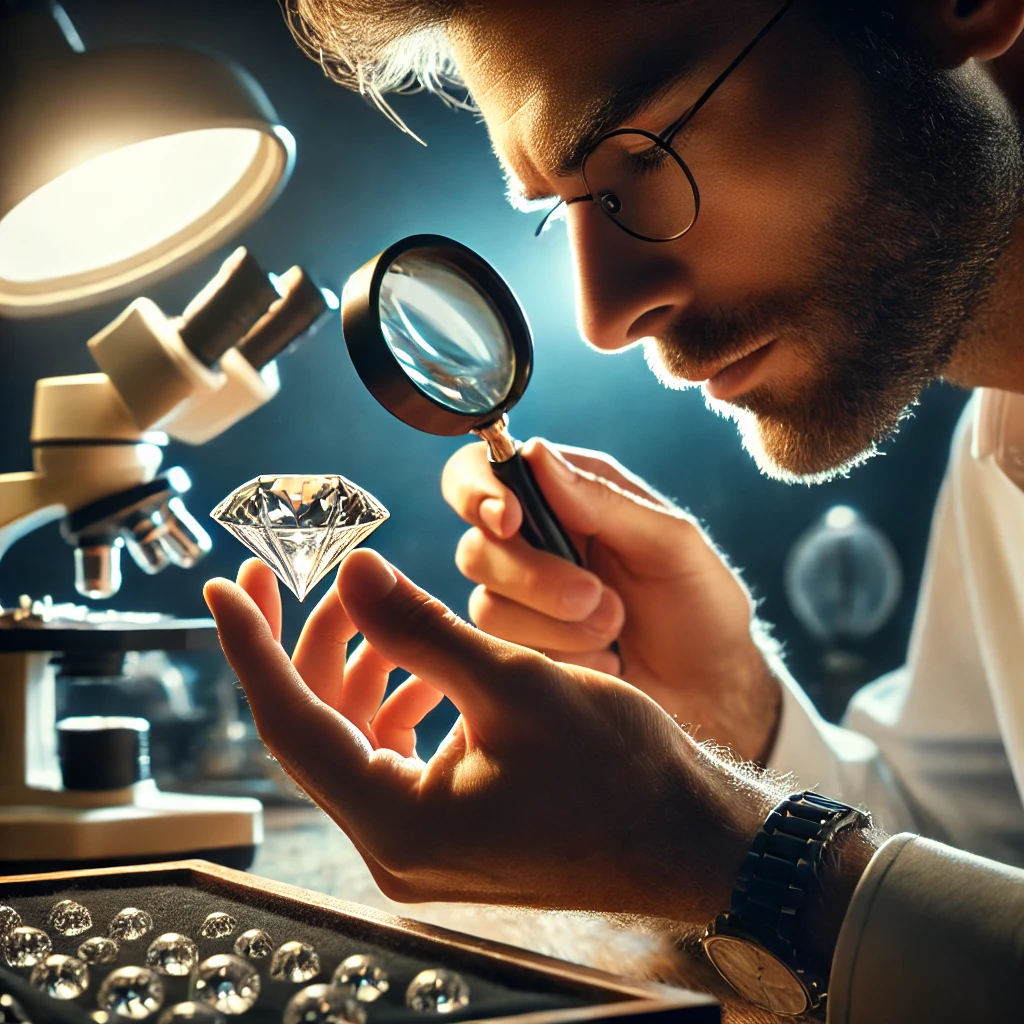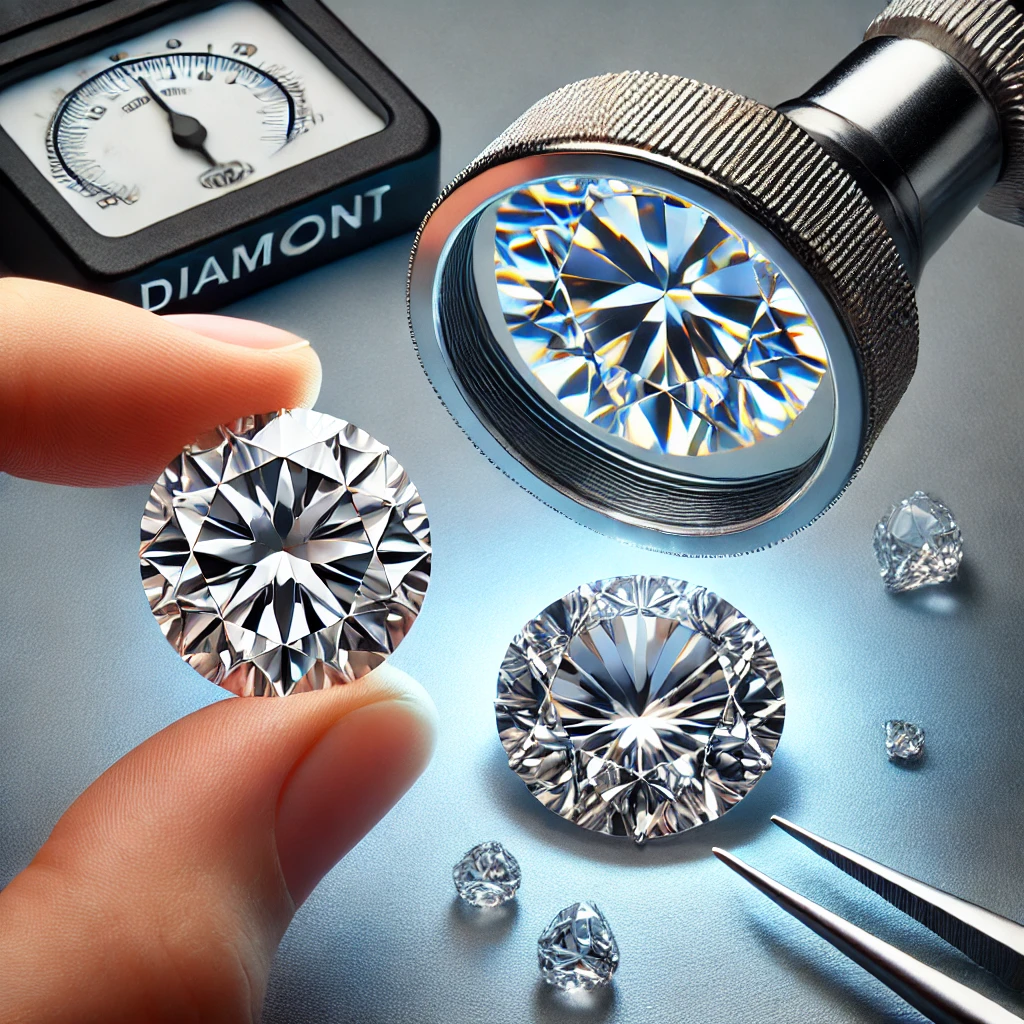
How to Spot a Fake Diamond
Diamonds have long been symbols of wealth, prestige, and timeless beauty. However, with advancements in synthetic gemstones and high-quality imitations, it has become increasingly difficult to differentiate a real diamond from a fake one. Whether you are a jeweler, gemologist, investor, or an educated consumer, understanding the scientific and technical methods for authenticating diamonds is crucial. This guide provides in-depth insights into how to spot a fake diamond using optical, thermal, and advanced gemological testing techniques.
1. Understanding Diamond Composition and Properties
A natural diamond is composed of pure carbon atoms arranged in a crystal lattice structure. This unique arrangement gives diamonds their unmatched hardness (10 on the Mohs scale), high thermal conductivity, and exceptional brilliance due to their refractive index (2.42). Any deviation from these properties can indicate a synthetic or counterfeit stone.
2. Basic Visual and Physical Inspection
a. Brilliance and Fire
Diamonds exhibit a strong light performance, showcasing:
Brilliance: The white light reflection inside the stone
Fire: The dispersion of light into spectral colors
Scintillation: The sparkle caused by light movement
Fake stones, such as cubic zirconia (CZ) and moissanite, often lack the precise balance of these properties, displaying excessive fire (moissanite) or dull brilliance (CZ).
b. Fog Test
Diamonds disperse heat rapidly. Breathe onto the stone—if the fog disappears instantly, it is likely a real diamond. Imitation stones retain condensation longer.
c. Weight Comparison
Cubic zirconia, a common diamond substitute, is approximately 55% heavier than a diamond of the same size. Measuring weight using a precision scale can indicate discrepancies.
3. Advanced Gemological Testing
a. Refractive Index (RI) Test
A diamond’s RI is approximately 2.42. Using a jeweler’s loupe (10x magnification) or a professional refractometer, examine how light bends through the stone. Double refraction, as seen in moissanite, indicates an imitation.
b. Thermal Conductivity Test
Diamonds are excellent heat conductors, unlike most imitations. A thermal conductivity meter (such as a diamond tester) can differentiate diamonds from simulants like CZ, which are poor conductors.
c. Electrical Conductivity Test
Moissanite, unlike diamonds, is electrically conductive. A moissanite tester, in conjunction with a diamond tester, can confirm authenticity.
d. UV Fluorescence Test
Under UV light, about 30-35% of diamonds exhibit blue fluorescence. While fluorescence alone is not a definitive test, an absence or unusual color response (e.g., green or red) can indicate a fake.
e. Spectroscopic Analysis
Using Raman spectroscopy, an advanced technique, we can analyze a diamond’s molecular structure. Real diamonds exhibit a distinct Raman shift at 1332 cm⁻¹.
4. Identifying Lab-Grown Diamonds
Lab-grown diamonds (CVD/HPHT) have identical chemical compositions but may contain growth-related features:
HPHT diamonds: Metallic flux inclusions and uneven strain patterns
CVD diamonds: Layered growth structures and unique fluorescence under deep UV light
Professional laboratories use advanced methods such as photoluminescence spectroscopy and magnetic response testing to distinguish between natural and synthetic diamonds.
5. Common Spot a Fake Diamonds and Their Properties
Imitation
Key Characteristics
Testing Method
Cubic Zirconia (CZ)
Heavier, lower RI, scratches easily
Weight test, loupe inspection
Moissanite
Double refraction, higher dispersion
RI test, electrical conductivity test
White Sapphire
Low brilliance, no fire
RI test, hardness test
Glass
Soft, low refractive index
Scratch test, thermal conductivity test
6. Professional Lab Certification
The most reliable way to confirm a diamond’s authenticity is through certification from reputable gemological laboratories such as:
GIA (Gemological Institute of America)
IGI (International Gemological Institute)
AGS (American Gem Society)
Certified diamonds come with a detailed report verifying their natural origin and quality parameters.
7. Conclusion
Spot a fake diamond requires a combination of visual inspection, gemological tests, and advanced scientific analysis. While simple techniques like the fog test and weight comparison can offer initial insights, professional verification through spectroscopy, thermal conductivity, and lab certification is essential for conclusive results. Educated buyers and professionals must remain vigilant in an era where diamond imitations continue to improve in quality.

Diamond Tester
By mastering these identification techniques, you can confidently assess diamonds and protect yourself from counterfeits in the jewelry and investment markets.
In Vedic astrology, diamonds (Vajra) are considered Adrusta Ratnam (Lucky Gemstone) for individuals ruled by Venus (Shukra Graha). People born under Taurus (Vrishabha) and Libra (Tula) zodiac signs benefit the most from wearing diamonds. This gemstone enhances wealth, charm, creativity, and relationship harmony. It is believed to attract prosperity and remove financial obstacles. However, wearing a diamond without proper astrological consultation may have adverse effects for those with incompatible planetary positions. To ensure its positive impact, the diamond should be natural, flawless, and energized before wearing. Always consult an astrologer to determine if a diamond suits your birth chart.
